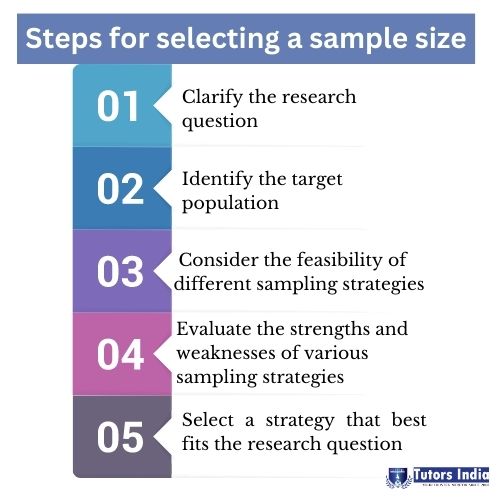How do I decide which sampling strategy would fit my qualitative research?
Many researchers, particularly inexperienced researchers, have trouble comprehending qualitative research, its approaches, sampling strategies, data collection techniques, data analysis techniques, how to reach interview saturation points and other issues. Many people try to overcome these obstacles and ultimately produce a qualitative study. Sampling in qualitative research methodology is gaining importance as more researchers want to understand human nature and behaviour. Interviews are conducted with participants who can aid in the researcher’s understanding of the research phenomenon. Those who know about the topic and can share their experience are often selected for a qualitative study. The researcher might watch situations or settings to gather more information and examine documents, artefacts, photographs, or drawings.
Sampling strategy
Many sampling strategies for qualitative research exist and may be confusing for a new researcher. However, since the data gathered by qualitative research cannot be quantified, reaching a saturation point is considered a goal by the researchers. So it’s crucial to use the correct sampling technique to include suitable subjects, respondents, or objects in the qualitative study, leading to an appropriate sample size. Unlike quantitative research, the non-probability sampling method is used in a qualitative study.
To decide which sampling strategy would fit their qualitative research, the researcher should consider several factors, including the research question, the purpose of the study, the type of data they want to collect, and the feasibility of the sampling strategy, given the resources and time available. The following steps may assist in the sampling strategy:
What is a sampling strategy that I should focus on for qualitative research?
The sampling strategy for qualitative research depends on the research question, the purpose of the study, and the type of data the researcher wants to collect. Some common sampling strategies for qualitative research include:

- Clarification of the research question: The researcher must ensure they clearly understand their research question and the type of data they need to answer it.
- Identification of the target population: The study population is determined, and the population characteristics relevant to the research question are considered.
- Consideration of the feasibility of different sampling strategies: The different sampling strategies based on the research question, the study purpose and the characteristics of the population are evaluated in this stage. For example, if the target population is difficult to access, snowball or purposive sampling may be more feasible than random sampling.
- Evaluation of the strengths and limitations of different sampling strategies: Based on the quality and richness of the data that can be gathered, the representativeness of the sample, and the possibility of bias, the advantages and disadvantages of each sampling strategy are considered in qualitative research.
- Selection of a sampling strategy that fits the research question: Based on the factors mentioned above, a sampling strategy best suited for the research question and the type of data that is collected is selected. The researcher must remember that the sampling strategy should be selected to maximize the data’s quality and depth rather than achieve statistical representativeness.
Conclusion
Choosing a sample strategy is a cornerstone for qualitative research based on factors like the research question, the study population and the available resources. Sampling in qualitative research is based on the principle of data saturation, and the researcher must have a thorough knowledge of the advantages and disadvantages of each sampling technique to make better decisions.
Tutors India has been offering high-quality dissertation services since 2001. It has a team of experts qualified in Masters and PhD degrees in various disciplines who can assist the students at every stage of their dissertation, ensuring the work is plagiarism and error-free, genuine and aligns with the university guidelines.

 Previous Post
Previous Post Next Post
Next Post